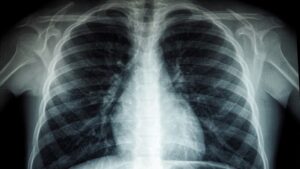[ad_1]
NECK PAIN REASONS
The causes of neck pain can be listed as follows:
Muscle strains: Overuse, such as spending too much time on your computer or smartphone, often triggers muscle tensions. Even small things like lying down or clenching your teeth can strain your neck muscles.
Joint and cartilage abrasions: Like other joints in your body, your neck joints tend to wear out as you age. Osteoarthritis causes the cushions (cartilage) between your vertebrae (vertebrae) to break down. As your body ages, it forms bone spurs (extensions) that affect joint movement and cause pain.
Nerve entrapment: Herniated discs or bone spurs in the vertebrae in your neck can press on nerves radiating from the spinal cord.
Injuries: Getting hit from behind in car crashes often causes a condition called whiplash injury. In this case, the head is rapidly shaken backwards and then forwards and soft tissue damage is experienced.
Diseases: Some diseases, such as rheumatoid arthritis, meningitis, or cancer, can cause neck pain.
NECK PAIN TYPES
Neck pain can be examined in 3 classes according to its duration:
Acute: lasts less than 4 weeks
Subacute: lasts 4-12 weeks
Chronic: Lasts 3 or more months.
Since the pain goes away on its own in acute neck pain, patients do not wonder about the cause of their pain and do not seek help. As a result, the pain can be repeated because the habits are not changed.
HOW DOES THE NECK PAIN TRANSFER?
If your neck pain did not occur after a blow or trauma, there are some methods you can do yourself:
Rest: For most neck strains and sprains, resting for a few days gives the muscles and tendons enough time to heal on their own. It is important to be careful to avoid strenuous activities or movements that cause more pain.
Ice and/or heat: Applying ice can be used as an anti-inflammatory to reduce swelling and pain. Initially, it is better to use cold compresses for neck pain. This is because cold applications can temporarily close small blood vessels and prevent swelling. After a few days, ice or heat can be applied alternatively. Constantly applying heat can cause swelling to increase.
Massage: It should be preferred mostly after applying ice or heat. A deep massage soothes muscle tension and spasms and reduces pain.
Correcting the posture: If poor posture is causing neck pain, simple changes may be the solution. Using a correctly positioned chair, monitor and keyboard while working, taking the correct sleeping position (supine) while sleeping, and using pillows that support the neck can reduce pain.
Lifestyle changes: If certain activities are found to trigger neck pain, these activities may need to be limited or avoided. For example, if the neck aches after spending time on the smartphone, this activity should be reduced. Also, the phone should be held close to eye level to keep the neck straighter while looking at the phone.
Over-the-counter drugs: Many over-the-counter pain relievers can be used to reduce inflammation or block pain signals from reaching the brain.
After the neck pain is gone, you can strengthen and stretch the muscles with small exercises.
NECK PAIN TREATMENT
Your doctor may recommend the following treatments when self-medication at home doesn’t work:
Strong pain relievers: Only prescription pain medications or muscle relaxants or tricyclic antidepressants can be used for treatment.
Physics Treatment: The physical therapist can teach you correct posture and neck strengthening exercises and may use heat, ice, electrical stimulation and other treatments to relieve your pain and prevent recurrence.
Subcutaneous electrical nerve stimulation (TENS): Electrodes on your skin near painful areas deliver tiny electrical pulses that can relieve pain.
Short term immobilization: A soft collar that supports your neck can help relieve pain by reducing pressure on the structures in your neck. However, it should not be used for more than three hours or more than one to two weeks at a time.
Steroid injections: Your doctor may inject corticosteroid medications to relieve pain into small facet joints in the bones of your cervical spine, near nerve roots, or into the muscles in your neck.
Operation: Surgery, which is rarely needed for neck pain, may be an option to reduce nerve root or spinal cord compression.
Follow NTV on social media
[ad_2]






